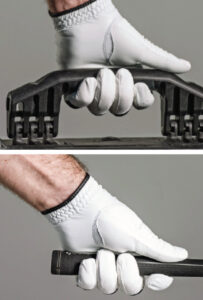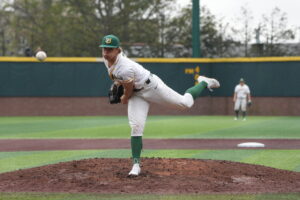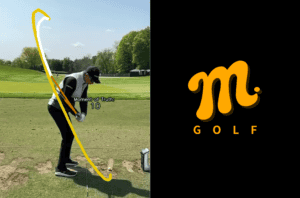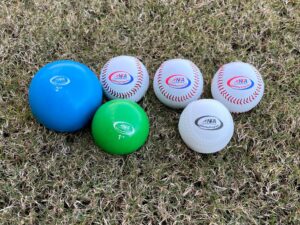While there might not be a universal “perfect” way to hold a golf club, there is a universal “best starting point” for a golf grip. From this foundation, you can make personalized adjustments so your grip works in harmony with your swing and range of motion, allowing you to control the clubface and strike the ball more effectively.
Setting the Top Hand
For right-handed golfers, the top hand in your golf grip is your left hand. The key here is to properly position your thumb and align your grip. Start by ulnar-deviating your wrist so that your thumb lines up with the top of your forearm. To visualize this, let your left arm dangle naturally at your side, thumb pointing forward. Then, think about pointing your thumb slightly downward toward the ground, creating a straight line from your elbow crease through the thumb knuckle to the tip of your thumb.
Once your wrist is aligned, place the club as straight across your hand as possible. You want the club resting in the fingers, not in the palm of the hand. This will give you the most amount of leverage during the swing to transfer speed and precision out to the ball at impact.
A TOP-HAND GRIP-TIP: I often recommend placing the club slightly behind you when gripping it. For a right-handed golfer, grab the club with your left hand and let it rest on the left side of your body, as if you were carrying a suitcase. The club should be angled to the ground with your hand just behind your left hip. This position helps align your thumb with your forearm more naturally, creating the ideal grip.
A COMMON MISTAKE TO AVOID: A golf grip mistake many people make is holding the club too much in the center of the hand or failing to deviate the wrist properly so the thumb isn’t aligned with the forearm. Once your hand is in position, pay attention to where the mid part of your wrist meets the hand. This area should be on top of the club, ensuring the club doesn’t press against your wrist.
Setting the Top Thumb
Position your top-hand thumb slightly off-center, toward the right side of the grip. Apply pressure with this thumb, as it plays a crucial role in controlling the torque on your club at the top of your swing.
Setting the Bottom Hand
Your bottom hand, or right hand for right-handed golfers, should attach to the side of the club—not the top or bottom. Train yourself to place your palm on the side of the grip, then cover your left thumb completely with your right thumb. Ensure a portion of your right thumb’s print contacts the grip. If your right thumb isn’t fully on the club, it’ll be harder to control the club throughout the swing.
Joining the Hands Together: You Have Options!
While the exact way you join your hands is less critical than proper hand positioning, it’s important to experiment and find what feels most comfortable while also allowing you to maintain control of the clubface. Keep in mind that as the club moves, its effective weight can reach 80–100 pounds at impact. A secure grip is essential to maintain control.
- The 10-Finger Grip: Also known as the “baseball grip,” this option allows all 10 fingers to contact the club. It’s often preferred by players with smaller hands or those new to the game.
- The Overlapping Grip: In this grip, the pinky finger of your right (or bottom) hand rests in the gap between the index and middle fingers on your left (or top) hand. This is one of the most popular grips among golfers.
- The Interlocking Grip: In the interlocking grip, the pinky finger of your right hand interlocks with the index finger of your left hand. While this grip offers a solid connection between your hands, it might not feel comfortable for everyone, especially those with smaller hands. If you use this grip, avoid lifting your left index finger off the club, as this can lead to excess hand movement and reduced control.

Tight v. Loose
Whether you consciously try to do it or not, your grip pressure is going to change throughout the swing. When the golf club picks up velocity, it is going to require more and more force to change the direction that it is swinging. This will naturally increase tension and pressure in your grip. Think about how you hold a fork when you’re eating; the pressure you exert on the fork depends on what you’re doing with it in that precise moment and you can expect it to constantly change.
Golfers who feel like grip tension is ruining their game are most likely striking the ball off center. This will cause the club to twist in their hands after impact and cause a negative feedback loop.
A proper grip sets the foundation for a consistent and powerful golf swing. Whether you’re a beginner refining your technique or an experienced player making adjustments, mastering these fundamentals can significantly improve your game.
If you’d like more great content from Mustard Golf, and you’d like to evaluate and improve your own golf swing, download the Mustard Golf app today.
Click HERE if you’d like to submit your pitching delivery or golf swing for use on #TeamMSTRD’s social media channels.








